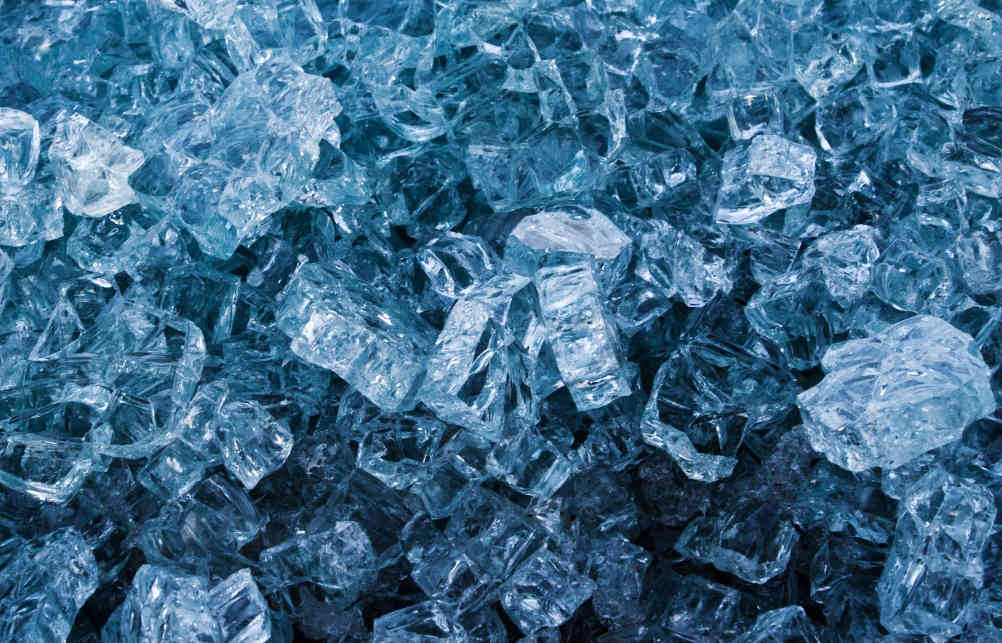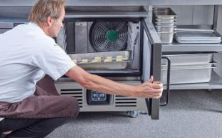
When it comes to ensuring food safety and maintaining quality, blast freezers play a crucial role, particularly in environments where large quantities of food are prepared and stored, such as during the festive season. Understanding the science behind blast chilling is key to appreciating its importance in the food industry and ensuring consumer satisfaction.
The Basics of Blast Chilling & Freezing
Blast chilling involves rapidly lowering the temperature of food items, usually from around 70°C to 3°C or below, within a very short period. Blast freezing takes this process a step further and pulls down the core temperatures of food from 70°C to -18°C. This rapid cooling is crucial for food safety, as it minimises the time food spends in the temperature 'danger zone' (between 8°C and 68°C), where bacteria is most active.
This process is facilitated by advanced refrigeration technology. Blast freezers use powerful fans and cooling systems to circulate extremely cold air around the food, ensuring quick and uniform cooling. This rapid method is far more effective than traditional slow cooling methods, which can leave food vulnerable to bacterial growth for extended periods.
Preserving Food Quality and Preventing Drying
Blast chilling and freezing equipment can be pricey to buy but is essential in any commercial kitchen. With models designed purely for blast chilling and others that perform both blast chilling and freezing, as well as multifunctional drawers with blast chiller functions, food safety is well taken care of. A key aspect of blast freezing, particularly in high-quality machines, is the balance between rapid freezing and preventing food from drying out. A good blast freezer operates at very low temperatures, but it's the fan's velocity that plays a crucial role. The fan must be fast enough to freeze the product quickly but slow enough to prevent drying the food and adding excessive heat load to the machine. It must also avoid creating large ice crystals which can damage the integrity of the food.
Rapid surface freezing is vital. When the surface of the food freezes quickly, water loss is minimised, ensuring the food retains its moisture and texture. This frozen surface also aids in the faster freezing of the food's core. If the surface doesn't freeze swiftly, the food can lose moisture, resulting in a dry texture and diminished quality.
UK Food Safety Laws and Blast Chilling
In the UK, food safety laws play a significant role in regulating the use of blast chilling and freezing in the food industry. According to the Food Standards Agency (FSA), all food businesses must ensure that food is cooled to 8°C or below within four hours. This is where blast chillers become invaluable, as they can reduce the temperature of food much quicker than this requirement, thus exceeding legal safety standards.
Blast chillers can achieve a temperature drop of 70°C to 3°C in within 90 minutes and blast freezers from 70°C to -18°C in 240 minutes.The total length of time that equipment takes to pull down the core temperatures of food will depend on the type of food itself (e.g. whether a joint of meat or pastries), the quantity of food to be chilled or frozen, the density, fat content and water content and the starting temperature of the food prior to blast chilling or freezing.
The UK's food safety regulations also stipulate that foods must be stored at safe temperatures to prevent harmful bacteria from growing. Blast freezers help businesses comply with these regulations by rapidly bringing down the temperature of food items and maintaining them at a consistent, safe level.
Additionally, businesses must record and monitor the temperatures of their refrigerators and freezers, including blast chillers, to ensure compliance with food safety regulations. These records must be available for inspection by local authorities, who regularly check businesses for compliance with food safety laws.

The Critical Role During Festive Season
During busy periods like Christmas, the role of blast freezers becomes even more significant. With hundreds of meals being prepared in a short time, the risk of foodborne illnesses increases. Stories of food poisoning frequently make headlines during these times. Blast freezers provide a solution by rapidly reducing the temperature of cooked foods, thus significantly reducing the likelihood of bacterial growth.
This rapid cooling is not just about safety; it also allows for the preparation of food well in advance without compromising on quality and minimising food waste. Foods retain their texture, flavour, and nutritional value, which is essential when catering to large groups during festive seasons.
In conclusion, blast freezers are an indispensable tool in the food industry. They ensure food safety by rapidly reducing the risk of bacterial growth and maintain the quality and integrity of food by preventing moisture loss and texture degradation. This technology is particularly crucial during high-volume periods like Christmas, providing peace of mind for both the food industry professionals and the consumers they serve.

Leave a Comment
Your email address will not be published. Required fields are marked *